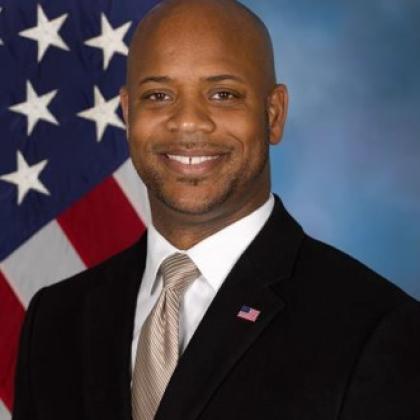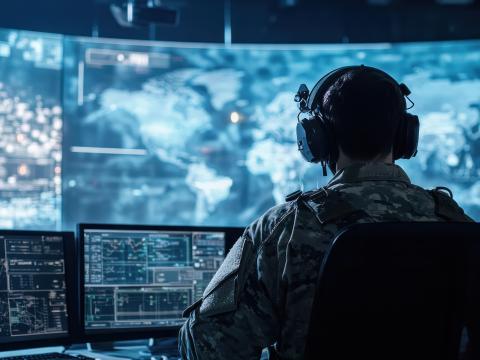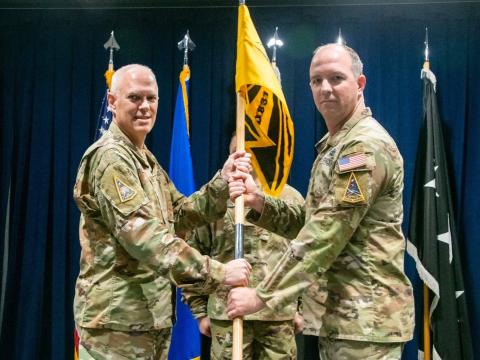On Point: Q&A With James Tucker Swindell
James Tucker Swindell is the chief of the Radio Frequency Communications Division within the Army’s Command, Control, Communications, Computers, Cyber, Intelligence, Surveillance and Reconnaissance (C5ISR) Center.
Why is it important to balance directional and omnidirectional antennas?
A lot of the systems we use are omnidirectional in nature, and of course, there are pros and cons to that. A lot of the directionality that we’re looking for from a future standpoint is a marked attempt to prevent the Army from being susceptible to enemy electronic warfare, signals intelligence and things of that nature by denying the enemy the actual source of data.
We sometimes joke that we’re driving porcupines because we’ve got so many antennas that are pushed off our vehicles. We’re really trying to balance those from a science and technology perspective.
I’m sure you’re familiar with the term low probability of intercept/low probability of detection, LPI/LPD. I’m pushing the team here to consider this an LPI/LPD capability that is spatial in nature—not waveform in nature. We want to spatially deny the adversary the opportunity to capture our signal by utilizing directional capabilities and wideband octave antennas to remove the number of unnecessary antennas from our soldiers’ vehicles, and in some cases on their person.
What are some specific projects your team is working on?
We are working on projects related to the command post. We are working on airborne relay communications capabilities looking at directional antennas. We are looking at directionality for some of our lower frequency systems as well.
Directionality is something that I’m applying across all of our science and technology projects. We have to take a look at what we can achieve in directionality and how that best fits into a concept of operations. It’s easy to do omni communications. It’s a lot more difficult to do the directionality, but as we look forward—not two years, but five, 10 years out—we need to make investments today in order to circumvent our adversaries’ capabilities in the battlespace to deny or capture our signals.
There’s a lot of interest across the department in directional antennas. You’ll see a lot of directionality already on some platforms—F-35, for example. There’s a lot of capability out there, and we want to make sure that the Army is in lockstep with the sister services and tracking developments in their science and technology. We want to make sure that when the time comes and we need to communicate, we at least have the capability to, and I believe those directional, wideband antennas will ensure that.

We have to take a look at what we can achieve in directionality and how that best fits into a concept of operations.
Since directional antennas already exist, why look at using them in 2026?
There’s a long way between the F-35 and a Humvee. You can’t always just buy the thing that’s on the F-35 because the F-35s got quite a bill behind it, and we’ve got a lot of vehicles in the Army.
However, the foundational technologies absolutely can be utilized. A lot of different programs have been executed to determine what building blocks we can capitalize on from existing efforts before we go and try to reinvent the wheel. What works on a tank doesn’t always work on a helicopter doesn’t always work on a jet fighter. But sometimes that foundational capability is transferrable.
Which cross-functional teams (CFTs) do you work with?
The Network CFT, absolutely. That’s our bread and butter here at the C5ISR Center, but I’ve also been in discussions with the Future Vertical Lift CFT as well as the Next-Generation Combat Vehicle team that’s up in Detroit, Michigan. We’ve done some studies on how directionality can help impact their capability and their mission set, and I’m sure there are other CFTs looking at directionality.




Comments